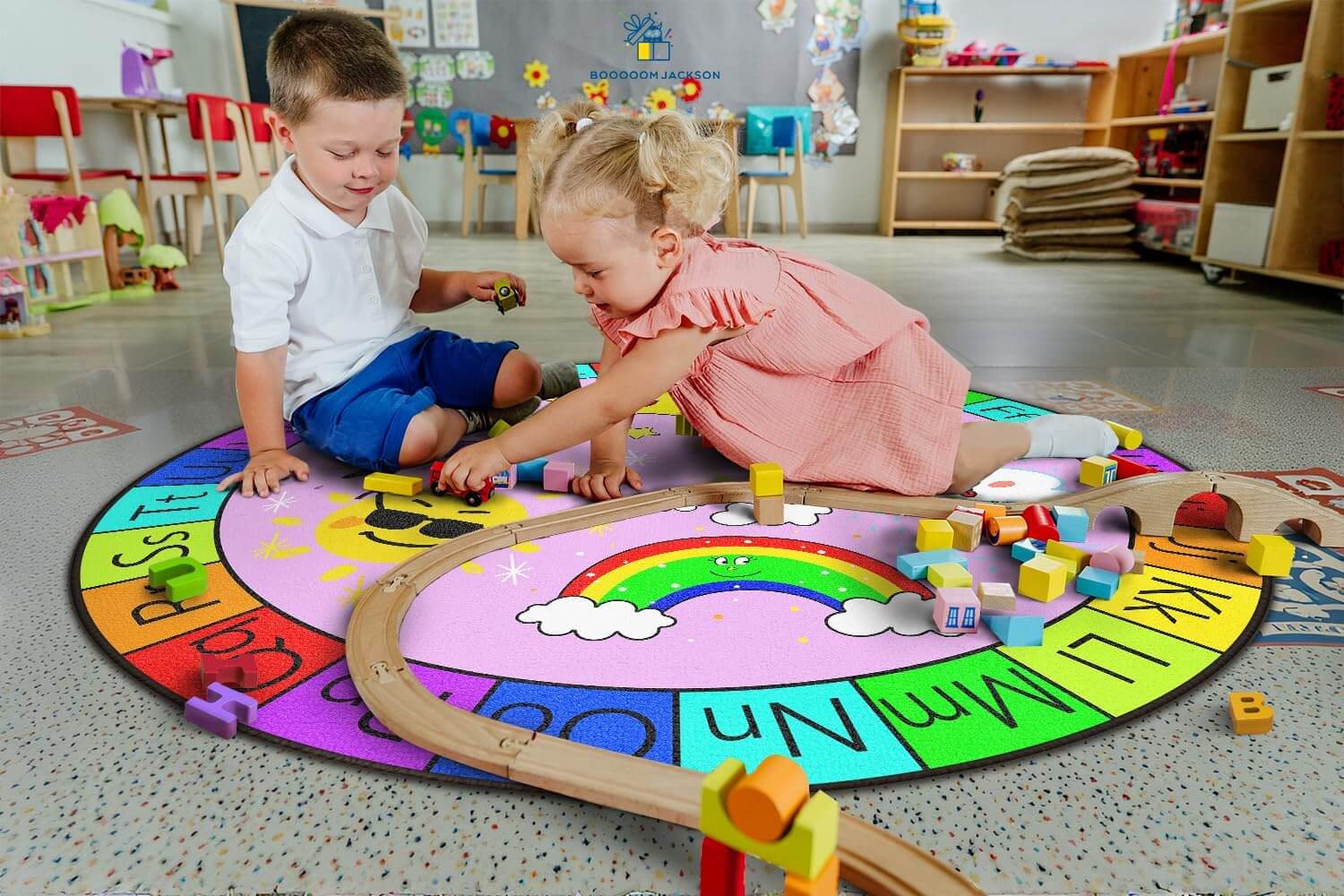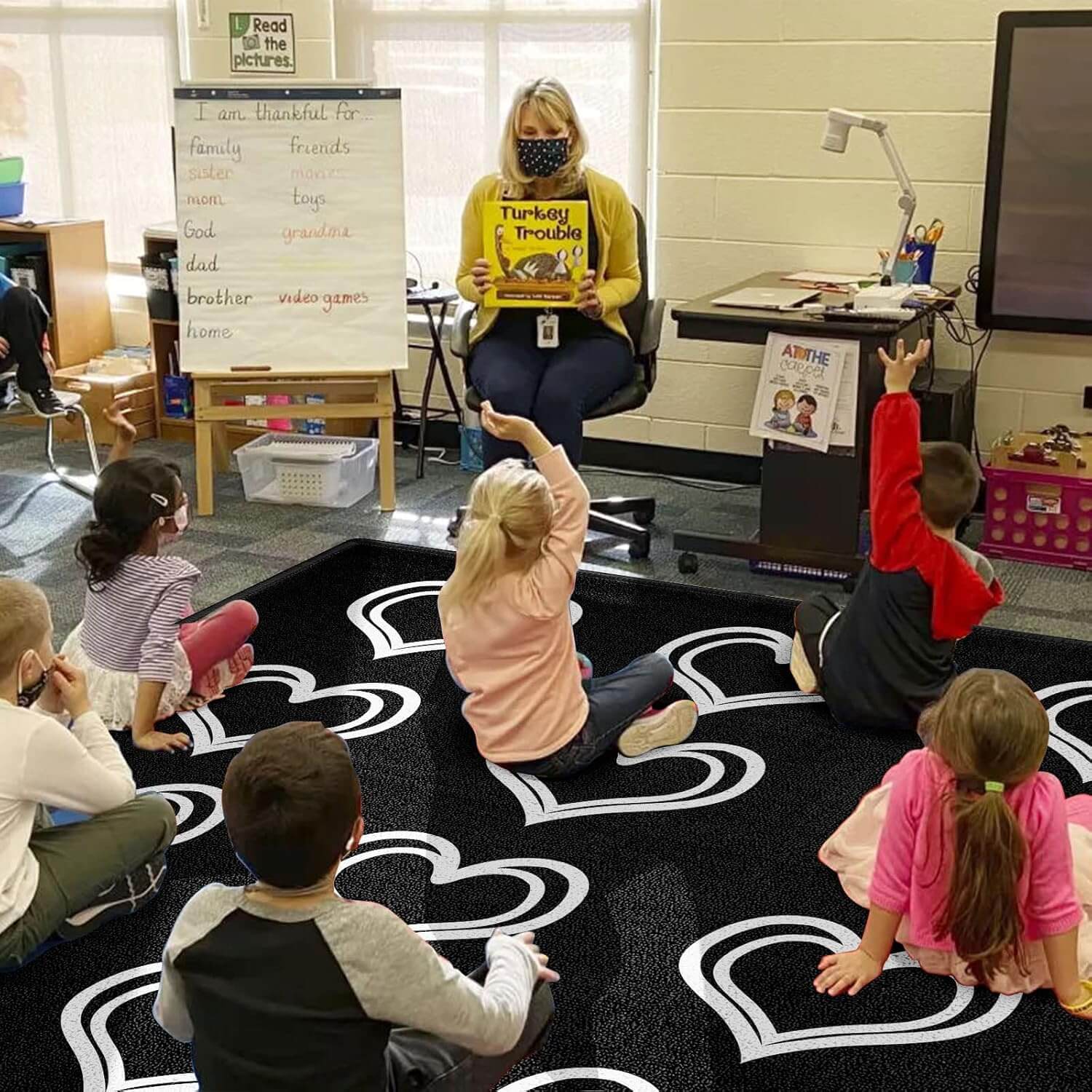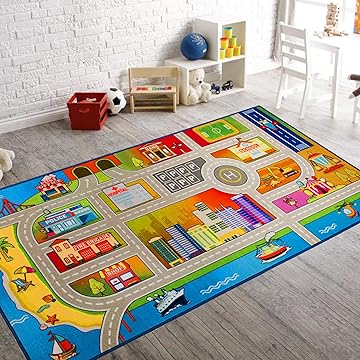Hey there, classroom decorating gurus! Let's talk about something that's right under our feet but has a HUGE impact on our little learners' brains: carpet colors! Yep, that's right – those hues your students are staring at during circle time might be making or breaking their focus game.
The Attention Crisis Is Real, Y'all
Let's not sugarcoat it – we're in the middle of what scientists call an "attention economy" crisis. Our kiddos are growing up in a world where every app, game, and device is scientifically designed to grab (and keep!) their attention. According to research from Common Sense Media, elementary-aged children now spend an average of 5+ hours on screens daily outside of school. No wonder our sweet peas have the attention span of a caffeinated squirrel sometimes!
But here's where we teachers get clever – we can actually hack their environment to support better focus. And it starts from the ground up!
Color Psychology: Not Just Pretty Talk
This isn't just about what looks cute on Instagram, folks (though who doesn't love a classroom photo that pops?). The science of color psychology is wicked fascinating!
According to color psychology experts at Psychology Today, different colors trigger distinct physiological and psychological responses. For our wiggly students, this can make the difference between "bouncing off the walls" energy and "let's dive deep into learning" focus.
The Science-Backed Carpet Color Champions
So which colors should you be eyeballing for your classroom floor? Based on research, here are the superstars:
Blues & Greens: The Focus MVPs
Blues and greens are the undisputed champs of the cognitive support world. A study published in the Journal of Environmental Psychology found that blue environments are associated with better performance on attention-demanding tasks. Why? These colors have wavelengths that actually promote calmness in our central nervous system. How cool is that?!
Check out these learning-boosting carpet options from Boooom Jackson that feature those calming blue and green tones. Their ocean-themed and woodland pattern rugs aren't just adorable – they're brain-friendly too!
Neutral Tones: The Understated Heroes
For our friends with sensory sensitivities or attention challenges, neutral tones like soft grays, tans, and gentle earth colors create a "low noise" visual foundation. According to ADHD experts at ADDitude Magazine, these colors provide enough visual interest without overwhelming sensitive nervous systems.
My teaching bestie in Minnesota switched to a sandy-neutral carpet with minimal pattern last year, and she swears her students with attention difficulties have shown massive improvement in group work concentration!
Colors to Approach with Caution
Not all hues are heroes in the attention game. Research suggests a few colors might deserve a second thought:
Red: The Double-Edged Sword
Red increases alertness and energy (think: emergency exit signs), which can be great for quick tasks but potentially overwhelming for sustained focus. According to research from the University of British Columbia, red environments may actually decrease performance on cognitive tasks requiring concentration.
If you simply MUST have red (school mascot requirements, perhaps?), consider using it as an accent rather than the dominant carpet color.
Super Bright Yellow: The Overstimulator
While yellow in moderation can promote optimism and creativity, intense yellow can be visually fatiguing. Our eyes actually process bright yellow first in our visual field, making it potentially distracting in large doses.
Patterns Matter Too, Hon!
It's not just about color – the pattern of your classroom carpet carries cognitive weight too! According to Wikipedia's entry on cognitive load theory, our brains have limited processing capacity. Complex, busy patterns create higher cognitive load, potentially stealing mental resources from learning tasks.
The sweet spot? Simple, consistent patterns that create visual interest without visual chaos. Those alphabet carpets might be cute, but if they're wildly colorful and busy, they might be attention-zappers rather than learning enhancers!
Real Talk for Real Budgets
I know what you're thinking – "This is fascinating, but I don't have the budget to replace my classroom carpet!" No worries, friend! Here are some budget-friendly ways to apply this science:
- Add a focus-enhancing color rug to your reading corner only
- Use carpet squares in cognitive-supporting colors for flexible seating
- Layer a calming blue or green area rug over existing carpet
- Ask your PTA about sponsoring a new rug – share the science!
Success Stories from Teachers Like You
My teaching pal in Atlanta switched from a bright multi-colored alphabet carpet to a calming blue-green geometric pattern from Boooom Jackson last fall. Her report? "Morning meeting times doubled from 15 minutes to a solid half-hour of engaged discussion. Same kiddos, same teacher, different carpet – it's kinda mind-blowing!"
Another colleague in Texas created what she calls "focus islands" using small area rugs in deep blue tones. Students who struggle with attention actually ASK to work on these special spots now!
Your Action Plan: Classroom Carpet Color Edition
Ready to optimize your floor for those growing brains? Here's your quick-start guide:
- Assess your current situation: Is your carpet visually "loud" or calming?
- Consider your student population: Do many struggle with focus challenges?
- Start small with a calming color rug in one area
- Observe the difference in attention and engagement
- Document the improvements (administration loves data!)
Remember, our classrooms are more than just pretty spaces – they're sophisticated learning environments that can either support or hinder cognitive development. By choosing classroom carpet colors backed by attention science, you're setting your students up for focus success!
Curious to see which attention-optimizing carpet would work best in your classroom? Pop over to Boooom Jackson and check out their range of focus-friendly options that combine learning with brain-based design!




Leave a comment
This site is protected by hCaptcha and the hCaptcha Privacy Policy and Terms of Service apply.